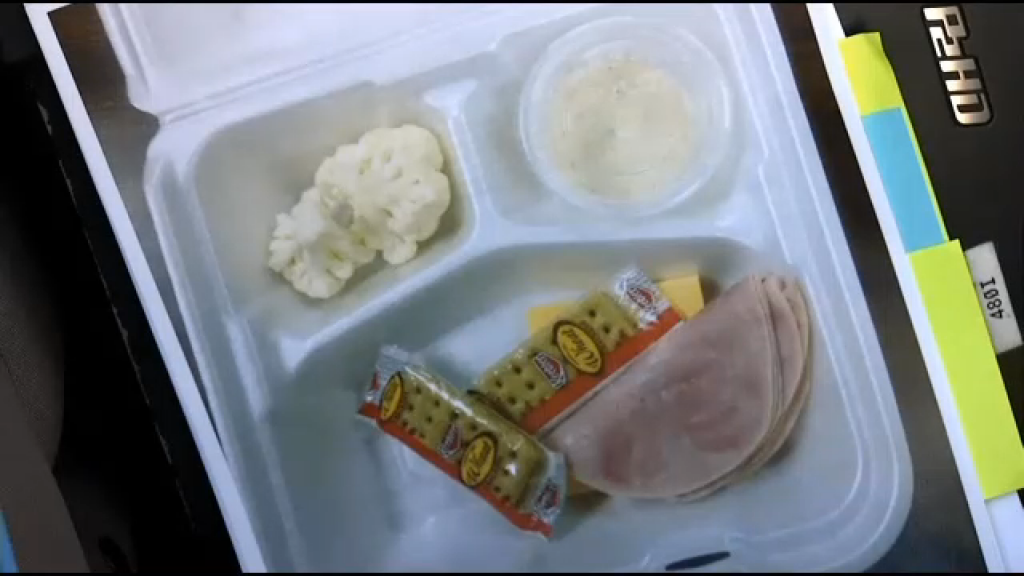See the Picture of a Skimpy School Lunch That One Parent Called ‘Ridiculous’
Kate Scanlon /
An Oklahoma student has sparked outrage about federal school lunch guidelines after taking a picture of her meager lunch.
Kaytlin Shelton’s lunch consisted of a few slices of lunch meat, a slice of cheese, two small packages of crackers and two pieces of cauliflower.
The lunch is particularly small for Shelton, 17, who is eight months pregnant.
Her family shared her picture with Oklahoma City’s KOKH-TV. According to local news channel, the meal is called a “munchable” and schools in Chickasha, Okla., “serve it every other week.”

Kaytlin Shelton’s lunch consisted of a few slices of lunch meat, a slice of cheese, two small packages of crackers and two pieces of cauliflower. (Photo: KOKH-TV)
Shelton’s father, Vince Holton, called the $3 meal “ridiculous” and insufficient for his pregnant daughter.
“I can go pay a dollar for a lunchable and get more food in it,” said Holton.
“It makes me want to take that and take it to the Superintendent and tell him to eat it for lunch,” said Shelton.
But David Cash, superintendent of Chickasha Public Schools, happens to agree with her:
“I know they are [too small]. There is no doubt about that. My own kid comes home and the first thing he does is raid the refrigerator. You’ve got, in some cases, little kids that their only two meals are breakfast and lunch at school and they’re getting … a grand total of 1,100 calories. That’s not enough.”
“Decisions should be made by communities, parents and students,” says @DarenBakst.
According to Fox News, the meal “complies with lunch regulations championed by first lady Michelle Obama and implemented by the USDA.”
No exceptions to the guidelines are made for pregnant students or athletes who need more calories.
Assistant State Superintendent for Child Nutrition Joanie Hildenbrand told KOKH-TV the district is “still struggling” with the federal regulations put in place two years ago.
According to Daren Bakst, a research fellow in agricultural policy at The Heritage Foundation, Shelton’s story is “yet another example of the problems with the meal standard.”
“The primary focus of the program should be that kids actually eat,” said Bakst.
He said school officials know there is a problem but their hands are tied.
“School officials want more flexibility,” said Bakst. “That needs to happen. The decisions should be made by communities, parents and students. And I stress students, because they are the ones who actually have to eat the food.”
